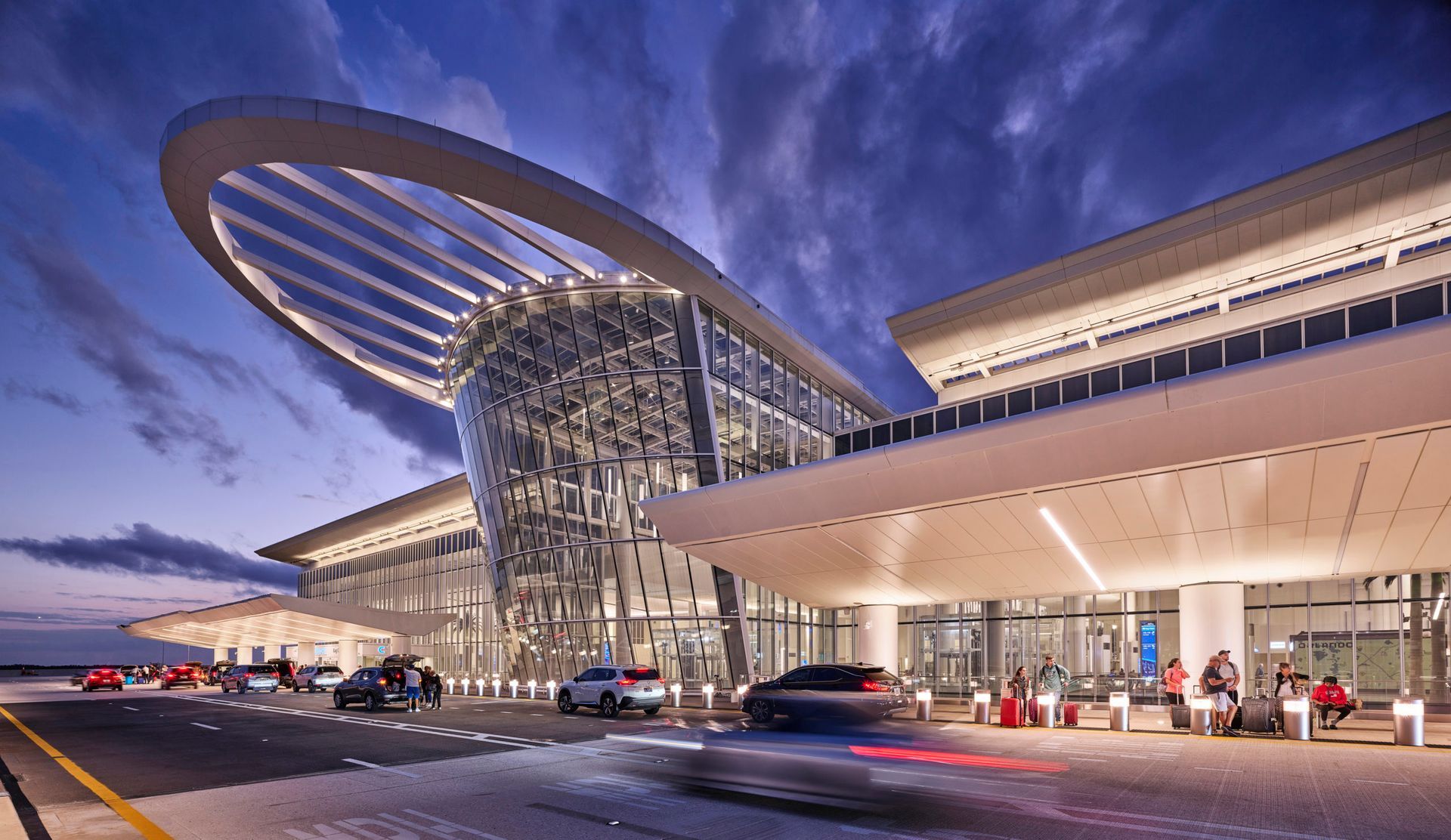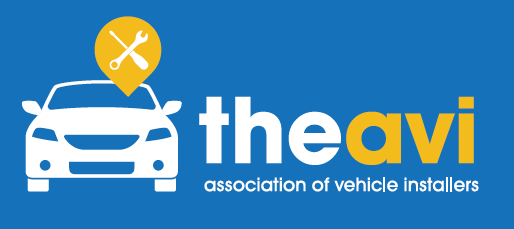01283 533330
Vehicle CCTV Systems: Boosting Fleet Security and Efficiency
Vehicle CCTV Systems

In today's fast-paced world of fleet management, vehicle CCTV systems have become an indispensable tool for enhancing safety, security, and operational efficiency. These advanced camera systems offer fleet managers and operators a comprehensive solution to monitor their commercial vehicles, improve driver behavior, and protect their assets. As the demand for enhanced fleet safety and management grows, understanding the benefits and applications of vehicle CCTV solutions becomes crucial for businesses looking to stay competitive and secure.
What Are Vehicle CCTV Systems?
Vehicle CCTV systems are sophisticated camera setups designed specifically for use in commercial vehicles and fleets. These systems utilise multiple cameras strategically placed around the vehicle to provide comprehensive coverage, including views of the road ahead, the driver's cabin, and potential blind spots. The cameras work in conjunction with a digital video recorder (DVR) to capture and store footage, which can be accessed in real time or retrieved later for review. Vehicle CCTV solutions have become increasingly popular among fleet operators due to their ability to enhance safety, reduce insurance claims, and improve overall fleet management.
Modern vehicle CCTV systems often integrate with telematics and GPS technology, allowing for more advanced features such as live tracking and remote monitoring. This integration enables fleet managers to have a complete overview of their vehicles' locations, activities, and surrounding environments. The systems can be customised to suit different vehicle types, from small delivery vans to large haulage trucks, ensuring that businesses can find a solution that fits their specific needs. As technology advances, these systems continue to evolve, offering higher-resolution footage, improved storage options, and more intelligent analysis capabilities.
How do Vehicle CCTV Systems work?
Vehicle CCTV systems operate by continuously recording video footage from multiple cameras installed on the vehicle. These cameras are typically positioned to cover various angles, including forward-facing, rear-view, and side-view perspectives. The captured footage is then stored on a digital video recorder (DVR) installed within the vehicle. Advanced systems may also incorporate real-time transmission capabilities, allowing fleet managers to access live video feeds remotely, keeping your fleet connected directly to their desktops. This feature is particularly useful for monitoring driver behavior, assessing road conditions, and responding promptly to incidents, helping to improve the safety of all road users.
Many modern vehicle CCTV solutions also integrate with other technologies to enhance their functionality. For instance, telematics systems can provide additional data such as vehicle speed, location, and engine performance, which can be overlaid with the video footage. Some systems also include GPS integration, enabling precise tracking of the vehicle's movements. These combined technologies create a comprehensive monitoring solution that not only records visual information but also provides valuable context for fleet operators to make informed decisions and improve overall fleet management strategies.
What types of Vehicle CCTV Systems are available?
There are several types of vehicle CCTV systems available to suit different fleet requirements and vehicle types. Basic systems typically include a forward-facing camera and a DVR unit, providing essential coverage for insurance claims and accident investigations. More advanced setups may incorporate multiple cameras, including rear-view cameras for reversing assistance, side-view cameras to eliminate blind spots, and in-cabin cameras to monitor driver behavior. Some systems are specifically designed for larger vehicles such as HGVs, offering additional features like extended recording times and ruggedised components to withstand harsh conditions.
Cutting-edge vehicle CCTV solutions now offer 360-degree coverage, utilising multiple wide-angle cameras to create a complete view around the vehicle. These systems are particularly beneficial for fleet operators managing large vehicles in urban environments where pedestrian safety is a concern. Additionally, some manufacturers provide bespoke CCTV solutions that can be tailored to specific fleet needs, such as specialised cameras for monitoring cargo areas or integrating with existing fleet management software. The variety of options available ensures that fleet managers can choose a system that best fits their operational requirements and budget constraints.
Why are Vehicle CCTV Systems becoming increasingly popular?
Vehicle CCTV systems are gaining popularity among fleet operators due to their numerous benefits in enhancing fleet safety and efficiency. These systems provide invaluable video footage that can be used to protect drivers and companies in the event of accidents or false claims, potentially reducing insurance premiums and legal costs. Fleet managers are increasingly recognising the value of having a comprehensive visual record of their vehicles' activities, which can be crucial in resolving disputes and improving overall fleet operations. Moreover, the presence of cameras acts as a deterrent to theft and vandalism, contributing to increased security across the fleet.
Another factor driving the adoption of vehicle CCTV systems is their role in improving driver behavior and safety. By monitoring driving habits, fleet managers can identify areas for improvement and implement targeted training programs. This not only enhances road safety but also helps reduce fuel consumption and vehicle wear and tear, leading to lower operational costs. Additionally, many insurance companies offer reduced premiums for fleets equipped with CCTV systems, recognising their potential to mitigate risks and provide clear evidence in case of incidents. As technology continues to advance, the integration of AI and machine learning into these systems promises even greater benefits, further increasing their appeal to forward-thinking fleet operators.
How Do Vehicle CCTV Systems Enhance Fleet Security?
Vehicle CCTV systems play a crucial role in enhancing fleet security by providing a comprehensive surveillance solution for commercial vehicles. These camera systems act as a powerful deterrent against theft, vandalism, and other security threats that fleet operators face. By continuously recording video footage, they create an indisputable visual record of events, which can be invaluable in the event of an incident. This not only helps protect the vehicle and its cargo but also safeguards the driver and the company's reputation. Fleet managers can leverage this technology to maintain a watchful eye over their assets, even when vehicles are operating in remote or high-risk areas, thanks to in-cab monitoring systems.
Moreover, vehicle CCTV systems contribute significantly to reducing insurance claims and associated costs. In the event of an accident or allegation, the recorded footage can provide clear evidence of what transpired, helping to quickly resolve disputes and protect against fraudulent claims. This level of documentation can lead to faster claim settlements and potentially lower insurance premiums for the fleet. Additionally, the presence of cameras can encourage better driving behavior, as drivers are aware that their actions are being monitored. This increased accountability often results in fewer accidents and incidents, further enhancing the overall security and safety of the fleet operations.
What security threats can Vehicle CCTV Systems help mitigate?
Vehicle CCTV systems are instrumental in mitigating a wide range of security threats faced by commercial fleets. One of the primary threats they address is theft, both of the vehicle itself and its cargo. The visible presence of cameras acts as a strong deterrent to potential thieves, while the recorded footage can assist law enforcement in recovering stolen assets, especially in fleets with CCTV. These systems are also effective in preventing and documenting instances of vandalism, which can result in costly vehicle downtime and repairs. For fleets operating in high-risk areas, CCTV systems provide an extra layer of security, helping to protect drivers from potential assaults or carjackings.
Furthermore, vehicle CCTV systems play a crucial role in combating insurance fraud and false claims. They provide irrefutable evidence in cases of staged accidents or exaggerated injury claims, which can otherwise result in significant financial losses for fleet operators. The systems also help address internal security threats, such as employee theft or misuse of company vehicles. By maintaining a record of vehicle usage and driver behavior, fleet managers can identify and address any suspicious activities promptly. Additionally, for fleets transporting valuable or sensitive cargo, CCTV systems offer peace of mind by ensuring constant surveillance throughout the journey, deterring potential hijacking attempts and unauthorised access to the vehicle.
How do cameras deter theft and vandalism?
Vehicle CCTV systems serve as a powerful deterrent against theft and vandalism by creating a visible security presence on commercial vehicles. Potential criminals are less likely to target vehicles equipped with obvious camera systems, knowing that their actions would be recorded and could lead to their identification and prosecution. The mere presence of cameras often encourages would-be thieves or vandals to seek easier targets, significantly reducing the risk to the protected fleet. This preventive effect is particularly valuable for vehicles that may be left unattended for extended periods or operate in high-crime areas, ensuring safety camera systems are in place.
Moreover, the deterrent effect of vehicle CCTV systems extends beyond external threats to include internal security concerns. Drivers and other employees are more likely to adhere to company policies and refrain from unauthorised use of vehicles when they know their actions are being monitored. This increased accountability can prevent issues such as fuel theft, unauthorised detours, or misuse of company assets. For fleet managers, the implementation of CCTV solutions across the fleet provides a comprehensive security strategy that not only protects physical assets but also safeguards the company's reputation and operational integrity. The resulting reduction in theft and vandalism incidents can lead to lower insurance premiums and decreased vehicle downtime, contributing to overall cost savings for the fleet.
Can Vehicle CCTV Systems assist in accident investigations?
Vehicle CCTV systems play a crucial role in accident investigations, providing clear and objective evidence of the events leading up to, during, and after an incident. The video footage captured by these systems offers an unbiased account of what transpired, which can be invaluable in determining fault and liability. This visual documentation helps fleet managers and insurance companies quickly assess the situation, potentially expediting the claims process and reducing the time and resources spent on lengthy investigations. In cases where legal proceedings are necessary, the recorded footage serves as compelling evidence in court, often proving decisive in resolving disputes.
Furthermore, the benefits of vehicle CCTV systems in accident investigations extend beyond just providing evidence. These systems often integrate with telematics data, offering a comprehensive view of the vehicle's speed, direction, and other relevant metrics at the time of the incident. This combined information allows for a more thorough analysis of the accident, helping to identify contributing factors such as driver behavior, road conditions, or mechanical issues. For fleet operators, this detailed insight can be instrumental in developing targeted safety improvements and driver training programs to prevent similar incidents in the future. Additionally, the ability to quickly and accurately determine the circumstances of an accident can protect drivers from false accusations and help maintain the fleet's safety record, potentially leading to reduced insurance premiums over time.
In What Ways Do Vehicle CCTV Systems Improve Operational Efficiency?
Vehicle CCTV systems significantly enhance operational efficiency in fleet management by providing valuable insights into various aspects of vehicle and driver performance. These systems enable fleet managers to monitor driver behavior in real time, identifying areas for improvement such as harsh braking, excessive speeding, or inefficient route choices. By analysing the recorded footage, managers can develop targeted training programs to address specific issues, leading to improved driving habits, reduced fuel consumption, and decreased wear and tear on vehicles.
This proactive approach to driver management not only enhances safety but also contributes to overall cost savings across the fleet.
Moreover, vehicle CCTV systems play a crucial role in optimising route planning and reducing vehicle downtime. The integration of camera footage with GPS data allows fleet operators to assess traffic conditions, identify potential obstacles, and make informed decisions about route changes in real time. This capability is particularly valuable for businesses operating in urban environments or dealing with time-sensitive deliveries. Additionally, the visual documentation provided by these systems can expedite the resolution of customer disputes or delivery issues, minimising delays and improving customer satisfaction. By leveraging the comprehensive data gathered through CCTV solutions, fleet managers can make data-driven decisions to streamline operations, reduce unnecessary mileage, and maximise the efficiency of their fleet resources.
How can these systems aid in monitoring driver behavior?
Vehicle CCTV systems are invaluable tools for monitoring and improving driver behavior within a fleet. These systems provide fleet managers with a direct visual feed of driver actions, allowing them to observe and assess driving habits in real time or through recorded footage. This comprehensive monitoring capability enables the identification of both positive and negative behaviors, such as adherence to safety protocols, proper use of seatbelts, and compliance with traffic laws. By having access to this detailed information, fleet managers can address issues promptly, provide targeted feedback, and implement specific training programs to enhance overall driver performance and safety.
Furthermore, the presence of CCTV cameras in vehicles often serves as a powerful motivator for drivers to maintain high standards of professionalism and safety. Knowing that their actions are being recorded, drivers are more likely to adhere to company policies and best practices, leading to a reduction in risky behaviors such as distracted driving or aggressive maneuvers. The footage captured by these systems can also be used as a valuable training tool, allowing managers to showcase examples of exemplary driving or highlight areas for improvement during driver evaluations. This data-driven approach to driver management not only enhances safety across the fleet but also contributes to reduced fuel consumption, lower maintenance costs, and improved customer satisfaction through more consistent and professional service delivery.
What role do CCTV recordings play in fleet management?
CCTV recordings play a multifaceted role in modern fleet management, serving as a crucial tool for enhancing safety, efficiency, and accountability across fleet operations. These recordings provide fleet managers with an objective, visual record of vehicle activities, driver behaviors, and road conditions. This wealth of information allows for in-depth analysis of various aspects of fleet performance, from assessing driver compliance with safety protocols to identifying opportunities for route optimisation. By reviewing CCTV footage, managers can gain valuable insights into the day-to-day challenges faced by their drivers and make informed decisions to improve overall fleet efficiency.
Moreover, CCTV recordings serve as an invaluable resource for training and quality assurance purposes. Fleet managers can use real-world examples captured by the cameras to illustrate best practices or highlight areas for improvement during driver training sessions. This visual evidence is often more impactful than verbal instructions alone, leading to more effective learning outcomes. Additionally, the recordings play a crucial role in resolving disputes, whether they involve accidents, customer complaints, or allegations of misconduct. By providing an unbiased account of events, CCTV footage helps protect both the company and its drivers from false claims, potentially reducing legal costs and preserving the fleet's reputation. The comprehensive documentation offered by these recordings also supports compliance with industry regulations and can be instrumental in maintaining certifications such as FORS (Fleet Operator Recognition Scheme).
How can real-time footage enhance route optimisation?
Real-time footage from vehicle CCTV systems can significantly enhance route optimisation efforts for fleet operators. By providing a live visual feed of road conditions, traffic patterns, and potential obstacles, these systems enable fleet managers to make dynamic routing decisions on the fly. This real-time information allows for immediate adjustments to planned routes, helping drivers avoid congested areas, construction zones, or accidents that could cause delays. The ability to react quickly to changing conditions not only improves delivery times but also reduces fuel consumption and vehicle wear and tear associated with idling in traffic or taking unnecessarily long routes.
Furthermore, the integration of real-time CCTV footage with GPS tracking and telematics data creates a powerful tool for comprehensive route analysis and optimisation. Fleet managers can overlay visual information with data on vehicle speed, fuel efficiency, and delivery schedules to identify patterns and opportunities for improvement, especially when utilising safety camera systems. This holistic approach to route planning allows for the development of more efficient and cost-effective delivery strategies over time. Additionally, real-time footage can be invaluable in urban environments, where navigating tight spaces and managing pedestrian-heavy areas require extra caution. By providing drivers with enhanced visibility through multiple camera angles, including reverse cameras, vehicle CCTV systems contribute to safer maneuvering and more efficient operations in challenging urban settings.
What Are the Key Features to Look for in a Vehicle CCTV System?
When selecting a vehicle CCTV system for your fleet, several key features should be considered to ensure optimal performance and value. High video resolution is crucial for capturing clear, detailed footage that can be used effectively in investigations or as evidence. Look for systems that offer at least 1080p resolution, with some advanced options providing 4K capabilities for even sharper images. Storage capacity is another vital factor; consider systems that offer both local storage on a DVR and cloud storage options. Cloud storage provides the added benefit of remote access to footage and increased data security, which can be particularly valuable for fleet managers overseeing operations across multiple locations.
GPS integration and live tracking functionality are essential features that enhance the overall capabilities of vehicle CCTV systems. These features allow fleet managers to correlate video footage with precise location data, providing context to events and enabling more efficient route management. Look for systems that offer real-time streaming capabilities, allowing for immediate access to live camera feeds when necessary. Additionally, consider the durability and reliability of the hardware, especially for fleets operating in harsh environments. Features such as weatherproof cameras, shock-resistant DVRs, and tamper-proof installations ensure the system can withstand the rigors of daily commercial use, making them specifically designed for commercial applications. Finally, user-friendly software interfaces and mobile app support are crucial for easy management and access to the system, enabling fleet operators to maximise the benefits of their vehicle CCTV solution across their entire fleet.
How important is video resolution for effective surveillance?
Video resolution plays a crucial role in the effectiveness of vehicle CCTV systems for surveillance purposes. High-resolution footage provides clearer, more detailed images that can be invaluable in various scenarios, from accident investigations to security incident analysis. When selecting a system, fleet managers should prioritise solutions that offer at least 1080p resolution, as this ensures that important details such as license plates, road signs, and facial features are captured with sufficient clarity. The ability to discern these details can make a significant difference in the event of an insurance claim, legal dispute, or security breach, potentially saving the company substantial time and resources.
Moreover, advancements in camera technology have made 4K resolution increasingly accessible for vehicle CCTV systems. While 4K cameras may come with a higher initial cost, they offer exceptional image quality that can provide even greater benefits in certain situations. For fleets operating in complex urban environments or dealing with high-value cargo, the extra detail captured by 4K cameras can be particularly advantageous. However, it's important to balance the desire for high resolution with practical considerations such as storage capacity and bandwidth requirements for data transmission. Fleet managers should assess their specific needs and operational environment to determine the optimal resolution that provides effective surveillance without overwhelming their data management systems or budget constraints.
What are the benefits of cloud storage vs. local storage?
The choice between cloud storage and local storage for vehicle CCTV systems presents fleet managers with important considerations regarding data management, accessibility, and security. Cloud storage offers several significant advantages, including the ability to access footage remotely from any location with an internet connection. This feature is particularly valuable for fleet managers overseeing operations across multiple sites or regions, as it allows for real-time monitoring and quick response to incidents. Cloud storage also provides a higher level of data redundancy and protection against physical damage or theft of the vehicle's onboard recording device, ensuring that crucial footage is preserved even if the vehicle is compromised.
On the other hand, local storage, typically in the form of onboard DVRs, offers immediate access to footage without relying on internet connectivity. This can be advantageous in areas with poor network coverage or when immediate playback is required at the scene of an incident. Local storage systems often have lower ongoing costs compared to cloud solutions, which may require subscription fees for data storage and management. However, they are more vulnerable to physical damage or tampering. Many modern vehicle CCTV solutions offer hybrid approaches, combining local storage for short-term footage retention with cloud backup for long-term archiving and remote access. This hybrid model allows fleet operators to leverage the benefits of both storage types, balancing immediate accessibility with the security and flexibility of cloud-based systems.
How do GPS integration and live tracking enhance functionality?
GPS integration and live tracking capabilities significantly enhance the functionality of vehicle CCTV systems, providing fleet managers with a comprehensive overview of their operations. By combining video footage with precise location data, these features enable real-time monitoring of vehicle movements and driver activities. This integration allows for immediate response to incidents, efficient route planning, and accurate verification of delivery times and locations. Fleet managers can track their vehicles' positions on a map interface while simultaneously accessing live camera feeds, providing an unparalleled level of oversight and control over fleet operations.
Furthermore, the combination of GPS data with CCTV footage creates a powerful tool for post-event analysis and reporting. In the event of an accident or security incident, managers can quickly correlate video evidence with exact location information, speed data, and timestamps. This comprehensive data set is invaluable for insurance claims, legal proceedings, and internal investigations. Additionally, GPS integration enables geofencing capabilities, allowing fleet operators to set up virtual boundaries and receive alerts when vehicles enter or exit designated areas. This feature enhances security and compliance monitoring, particularly for fleets transporting sensitive cargo or operating in restricted zones. The synergy between GPS tracking and CCTV systems ultimately leads to improved operational efficiency, enhanced safety measures, and more effective risk management across the entire fleet.
What Are the Costs and ROI of Implementing Vehicle CCTV Systems?
Implementing vehicle CCTV systems requires a significant initial investment, but the potential return on investment (ROI) can be substantial for fleet operators. The upfront costs typically include the purchase of camera equipment, DVRs, installation fees, and potentially, software licenses for management platforms. For a basic system, costs can range from $500 to $1,500 per vehicle, while more advanced setups with multiple cameras and additional features may cost upwards of $3,000 per vehicle. However, it's crucial to consider these costs in the context of the long-term benefits and potential savings that CCTV systems can provide.
The ROI of vehicle CCTV systems is often realised through various avenues, including reduced insurance premiums, lower accident-related costs, and improved operational efficiency. Many insurance providers offer discounts for fleets equipped with CCTV systems, recognising their role in risk mitigation and claim resolution. Additionally, the footage captured by these systems can help protect against fraudulent claims and expedite legitimate ones, potentially saving thousands in legal fees and settlements. Operational savings can be achieved through improved driver behavior, leading to reduced fuel consumption and vehicle wear and tear. While the exact ROI will vary depending on fleet size, operational environment, and specific system features, many fleet operators report significant cost savings and operational improvements within the first year of implementation, often justifying the initial investment.
What initial investment is required for a reliable system?
The initial investment required for a reliable vehicle CCTV system can vary widely depending on the size of the fleet, the complexity of the chosen solution, and the specific features desired. For a basic setup including a forward-facing camera, DVR, and installation, fleet operators can expect to invest between $500 and $1,500 per vehicle. However, more comprehensive systems that include multiple cameras (such as rear-view, side-view, and in-cabin cameras), advanced DVRs with larger storage capacities, and GPS integration can cost upwards of $2,000 to $3,500 per vehicle. It's important to note that these costs may be higher for specialised vehicles or those requiring custom installations.
In addition to the hardware costs, fleet operators should also consider the expenses associated with software licenses, training, and potential upgrades to their existing fleet management systems to accommodate the new CCTV solution. Cloud storage subscriptions, if opted for, represent an ongoing cost that should be factored into the initial investment calculations. While the upfront costs may seem substantial, it's crucial to view this investment in the context of the long-term benefits and potential savings it can bring to the fleet operation. Many leading vehicle CCTV providers offer flexible pricing models and leasing options, which can help distribute the initial investment over time, making it more manageable for fleet operators of various sizes.
How can Vehicle CCTV Systems save money in the long run?
Vehicle CCTV systems can lead to significant cost savings for fleet operators over time through various mechanisms. One of the most immediate financial benefits is the potential reduction in insurance premiums. Many insurance providers offer discounts to fleets equipped with CCTV systems, recognising their role in risk mitigation and accident prevention. These systems also play a crucial role in protecting against fraudulent claims and expediting the resolution of legitimate ones, potentially saving thousands in legal fees and settlements. By providing clear evidence in the event of accidents or disputes, CCTV footage can help fleet operators avoid costly litigation and protect their reputation.
Furthermore, the implementation of vehicle CCTV systems can lead to substantial operational savings. By monitoring driver behavior, these systems encourage safer driving practices, which in turn can result in reduced fuel consumption, lower maintenance costs, and decreased vehicle wear and tear. The ability to optimise routes and improve overall fleet efficiency through real-time monitoring and data analysis can lead to significant reductions in operating expenses. Additionally, the deterrent effect of CCTV cameras can help prevent theft and vandalism, reducing the costs associated with vehicle downtime and repairs. While the initial investment in CCTV technology may be substantial, many fleet operators find that the long-term savings and operational improvements far outweigh the upfront costs, making it a sound financial decision for enhancing fleet security and efficiency.
What factors affect the overall return on investment (ROI)?
Several key factors influence the overall return on investment (ROI) for vehicle CCTV systems in fleet operations. The size and type of the fleet play a significant role, as larger fleets often see more substantial benefits due to economies of scale in implementation and management. The operational environment is another crucial factor; fleets operating in high-risk areas or urban centers with complex traffic patterns may experience a higher ROI due to increased accident prevention and more efficient route optimisation. The specific features and capabilities of the chosen CCTV system also impact ROI, with more advanced systems offering greater potential for cost savings through comprehensive monitoring and data analysis.
Additionally, the effectiveness of integration with existing fleet management systems and the company's ability to leverage the data collected by CCTV systems can significantly affect ROI. Fleets that successfully use CCTV footage for driver training, performance improvement, and operational optimisation tend to see higher returns. The reduction in insurance premiums and claim-related costs is a major contributor to ROI, but the extent of these savings can vary based on the fleet's historical claims record and the insurer's policies. Moreover, the company's commitment to using the system consistently and effectively, including regular maintenance and updates, plays a crucial role in maximising long-term benefits. Ultimately, the ROI of vehicle CCTV systems is influenced by a combination of technological, operational, and managerial factors, making it essential for fleet operators to carefully consider their specific needs and implementation strategies to achieve the best possible return on their investment.
How to Choose the Right Vehicle CCTV System for Your Fleet?
Selecting the right vehicle CCTV system for your fleet requires careful consideration of several factors to ensure optimal performance and value. Begin by assessing your fleet's specific needs, including the types of vehicles in operation, the environments they operate in, and the primary security and efficiency challenges you face. Consider the number and placement of cameras required for comprehensive coverage, taking into account potential blind spots and areas of particular concern. Evaluate the resolution and recording quality needed to capture clear, usable footage, especially if you operate in challenging lighting conditions or need to capture fine details like license plates.
Another crucial aspect to consider is the storage and retrieval of footage. Determine whether local storage, cloud-based solutions, or a hybrid approach best suits your operational requirements and data management capabilities. Look for systems that offer user-friendly interfaces and robust software features for easy access and analysis of recorded data, which can be crucial for managing a fleet with CCTV. Additionally, consider the scalability of the system to accommodate future fleet growth or technological advancements. It's also important to evaluate the reputation and support services of potential CCTV system providers, ensuring they offer reliable customer support, training, and maintenance services. By carefully weighing these factors and aligning them with your budget and long-term fleet management strategy, you can select a vehicle CCTV system that enhances your fleet's security, efficiency, and overall performance.
What questions should you ask before making a purchase?
Before investing in a vehicle CCTV system for your fleet, it's crucial to ask a series of pertinent questions to ensure you're making an informed decision. Start by inquiring about the system's compatibility with your existing fleet management software and telematics systems. Understanding how seamlessly the CCTV solution can integrate with your current infrastructure is vital for maximising its benefits. Ask about the resolution and frame rate of the cameras, especially for forward-facing and driver-facing units, to ensure they meet your specific needs for clarity and detail. Inquire about storage options, including local DVR capacity and cloud storage availability, and understand the costs associated with data management and retention.
Additionally, it's important to question the provider about the system's durability and reliability in various operating conditions. Ask about weatherproofing, vibration resistance, and the expected lifespan of the equipment. Investigate the level of customer support and training provided, including the availability of technical assistance and the process for software updates and system maintenance. Inquire about data security measures, especially if opting for cloud storage, to ensure compliance with privacy regulations and protect sensitive information. Finally, ask about the scalability of the system and the provider's roadmap for future technological advancements. By thoroughly addressing these questions, fleet managers can make a more informed decision and choose a vehicle CCTV system that aligns with their operational needs and long-term goals.
How can you assess the specific needs of your fleet?
Assessing the specific needs of your fleet is a crucial step in selecting the most appropriate vehicle CCTV system. Begin by conducting a comprehensive analysis of your fleet's operational characteristics, including the types of vehicles in use, the environments they operate in, and the primary challenges they face. Consider factors such as urban versus rural routes, high-risk areas, and typical cargo types. Evaluate your current safety and security protocols to identify gaps that a CCTV system could address. Engage with drivers and fleet managers to gather insights on areas where visual monitoring could improve safety or operational efficiency.
Furthermore, review your fleet's historical data on accidents, theft incidents, and insurance claims to pinpoint specific areas where CCTV systems could have the most significant impact. Assess your current telematics and fleet management systems to determine compatibility requirements for any new CCTV solution. Consider your company's growth projections and how they might affect your CCTV needs in the future.
FAQ
Q: What are the benefits of installing a vehicle CCTV camera system for fleets?
A: Installing a vehicle CCTV camera system offers numerous benefits for fleets, including improved vehicle safety, protection against false claims, and the ability to monitor driver behavior. These systems help reduce blind spots, enhance pedestrian safety, and provide valuable footage for insurance claims, reinforcing the need for safety camera systems. Additionally, they can help improve the overall safety of your fleet and potentially lower insurance premiums.
Q: How does a vehicle CCTV system integrate with telematics?
A: Vehicle CCTV systems can be integrated with telematics to provide a comprehensive fleet management solution. This integration allows fleet managers to access HD footage from individual vehicle cameras across their fleet directly to their desktops. By combining video data with telematics information, managers can gain deeper insights into driver behavior, vehicle performance, and overall fleet efficiency.
Q: What is the Direct Vision Standard (DVS) and how does it relate to vehicle CCTV systems?
A: The Direct Vision Standard (DVS) is a safety initiative aimed at improving the visibility from commercial vehicles, particularly in urban areas. Vehicle CCTV systems play a crucial role in meeting DVS requirements by providing additional visibility around the vehicle, especially in blind spots. These systems help fleets comply with DVS regulations and enhance overall vehicle safety, particularly for pedestrians and vulnerable road users.
Q: How can vehicle CCTV systems help with insurance claims and reduce premiums?
A: Vehicle CCTV systems provide valuable video evidence in the event of accidents or incidents, which can be crucial for insurance claims. This footage can help protect your fleet from false claims and expedite the claims process. Many insurance companies recognise the benefits of these systems and may offer reduced premiums for fleets equipped with CCTV, as they demonstrate a commitment to safety and risk reduction.
Q: What features should I look for in a commercial vehicle CCTV system?
A: When choosing a commercial vehicle CCTV system, look for features such as high-definition cameras, wide-angle lenses to minimise blind spots, night vision capabilities, and robust data storage. Additionally, consider systems that offer live streaming, GPS tracking integration, and easy access to footage. Some advanced systems also include AI-powered event detection and driver coaching features to further enhance fleet safety and efficiency.
Q: How does a vehicle CCTV system contribute to FORS (Fleet Operator Recognition Scheme) compliance?
A: Vehicle CCTV systems are an essential component for fleets aiming to achieve FORS compliance. These systems help meet FORS requirements by improving vehicle safety, particularly in relation to vulnerable road users. They assist in reducing blind spots, enhancing driver awareness, and providing valuable data for incident analysis and driver training. By implementing CCTV systems, fleets can demonstrate their commitment to safety and best practices, which is crucial for FORS accreditation.
Q: Can vehicle CCTV systems help improve driver behavior and fleet efficiency?
A: Yes, vehicle CCTV systems can significantly improve driver behavior and fleet efficiency. By providing video evidence of driving practices, these systems encourage drivers to adhere to safety protocols and company policies. Fleet managers can use the footage for driver training, identifying areas for improvement, and recognising exemplary performance. This leads to safer driving habits, reduced fuel consumption, and overall improved fleet efficiency.
Q: How does a vehicle CCTV system provide peace of mind for fleet operators?
A: Vehicle CCTV systems offer peace of mind to fleet operators by providing comprehensive surveillance of their vehicles and drivers. With the ability to access live feeds and review recorded footage, operators can monitor their fleet from anywhere, ensuring vehicles are being used properly and drivers are following safety protocols. In case of accidents or theft, the recorded footage serves as valuable evidence, protecting the fleet's interests and potentially saving significant costs in the long run.
We're great at what we do...
Manufacturers Warranty
All products we use are of the highest quality and come with a manufacturers warranty.
Installation Warranty
Out of Hours Service
AVI Accredited
All our installers are AVI accredited and therefore you can be assured of the highest quality fit every time.
Brands we work with...
Contact info
T: 01283 533330
SmartFits Installations Limited
4 Eastgate Business Centre,
Eastern Avenue, Burton.
DE13 0AT
All Rights Reserved | Smartfits | Terms & Conditions










